Biosafety Cabinets and Hoods
The laminar flow hood first appeared in the field of science, where a guarantee of the microbiological purity of samples was required to perform experiments without risk of cross-contamination. As the laminar flow hood expanded its use, hospitals, clinics and other medical centers recognized its benefits for safe and effective sample handling. For example, it is used to perform DNA extraction, ECyM and PCR in clinical laboratories.
The laminar flow hood also ensures the quality of clinical results by minimizing exposure to cross-contamination. This is achieved by preventing microorganisms from coming into contact with the sample and becoming contaminated, thus reducing the possibility of erroneous or inconsistent results at the clinical level. In addition, the chamber design ensures that laboratory personnel are protected from the possible harmful effects of the chemical or microbiological solvent.
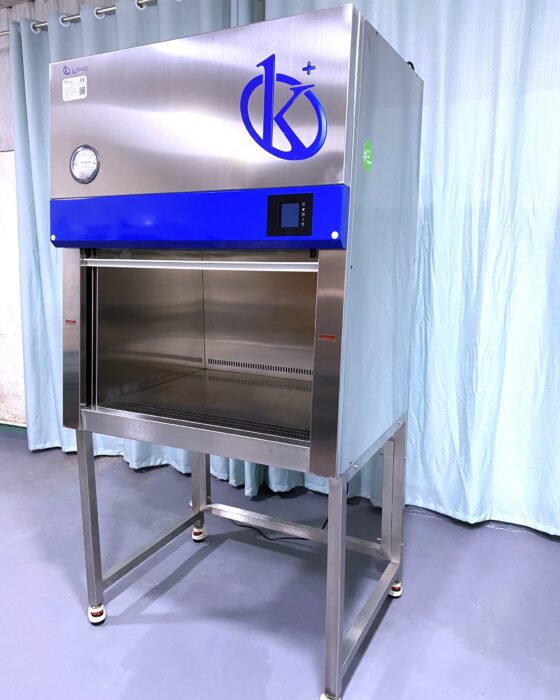
Types of Biosafety Cabinets and Hoods a Laboratory May Need

Class II Biosafety Cabinets
The laminar flow bell is a vital tool in clinical laboratories, hospitals and other medical care facilities that offer evidence and procedures involving the manipulation of medical samples. This technology-based tool is critical to maintain sample quality, to ensure the safety of the professionals handling the sample, and to ensure that the quality of the results is not affected by contamination that occurs during the handling process. In this tool, laminar flow is used to reduce the amount of microorganisms that are entrained in the air and come into contact with a sample being handled.
This equipment for handling medical samples is an extremely important tool to ensure the safety, quality and results of medical procedures that involve biological material. This tool is a safe and effective solution to reduce the minimum exposure to personal infectious agents, as well as to ensure the accuracy of clinical results. The laminar flow bell provides an effective isolation against pollution, resulting in accurate and reliable sampling results.
Class II Biosafety Cabinets
The laminar flow bell consists of a camera with two accesses or burlesque. The first acts as a barrier to prevent any contaminants from entering the chamber. Once inside, the fan-driven laminar flow ensures the vertical-horizontal flow of air to create a stable air barrier between the sample and the handler.
The laminar flow is controlled to maintain a slightly negative pressure inside the hood; this helps prevent any contaminants from exiting the hood. When this mechanism is combined with proper techniques for handling the sample correctly, employing techniques such as using sterile gowns, sterile gloves and a proper chin guard, good isolation against microbial contamination is achieved.

In Kalstein you can find the Biosafety Cabinets and Hoods ideal for your Laboratory
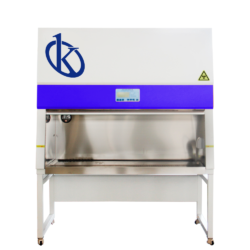
Biological Safety Cabinet 100% Exhaust Class II A2 Biosafety Cabinet YR05704
Air curtain isolation design prevents internal and external cross-contamination, 30% of...
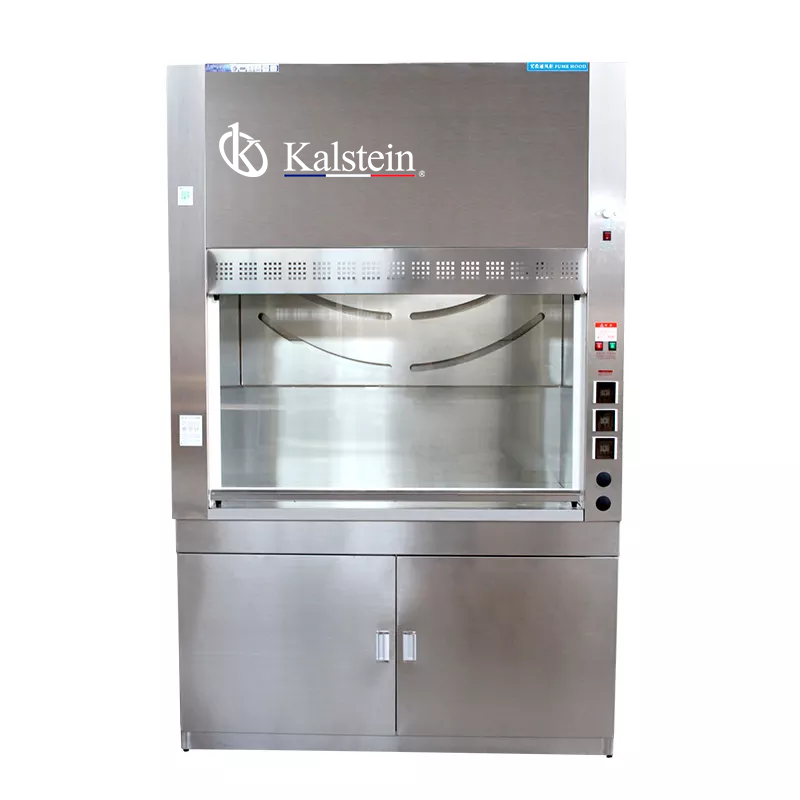
Stainless Steel Laboratory Fume Hood YR05823
Upper side panel (1.2mm thick galvanized steel plate, epoxy sprayed outiside).Liner and guide baffles 5mm thick anti melamine board..
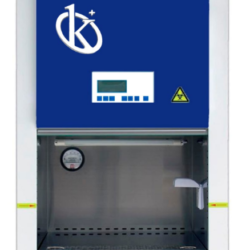
Biosafety Cabinet Class II A2 YR0090-AE
Air curtain isolation design to prevent cross contamination inside and outside, 30% of the airflow is discharged, 70% of the...
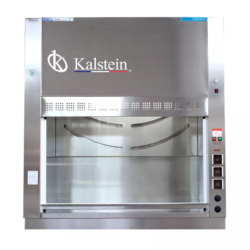
Laboratory Fume Hood,acid and alkali resistance Fume Cupboard Hospital
Upper side panel (1.2mm thick galvanized steel plate, epoxy sprayed
Our Best Selling Biosafety Cabinets and Hoods
Provide use for medical and health institutions, colleges and universities and other industries for the operation of regional air purification.
Mirror stainless steel, corrosion-resistant; low consumption, high efficiency filter; microcomputer control, adjustable air velocity.
This series clean bench is the essential equipment to carry out biotechnology research and experimental, widely used in medical, college and other industries. Provide air purification for the working area.
|
Model
|
YR05269-2
|
|
Wind speed (m/s)
|
0.25 ~0.45
|
|
Illumination (LX)
|
≥300lx
|
| Noise | ≤62dB |
|
Voltage (V)
|
220
|
|
Power (KW)
|
0.1
|
|
Inner size (mm) (H×W×D)
|
410×670×440
|
|
Overoll size (mm) (H×W×D)
|
580×700×610
|
|
Packing size (mm)(H×W×D)
|
700×780×690
|
|
Net weight (KG)
|
40
|
|
Shipping weight (KG)
|
43
|
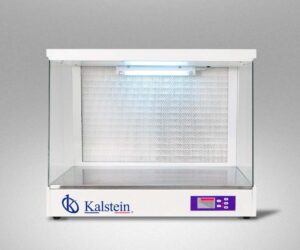
Catalog of Biosafety Cabinets and Hoods on offer
-

Laminar Flow Cabinet YR05742
-
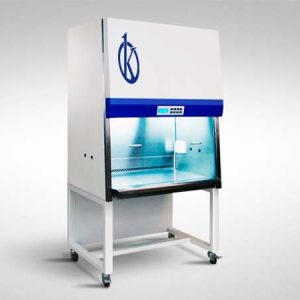
Biological Safety Cabinet YR05270 – YR05271
Select options This product has multiple variants. The options may be chosen on the product page -
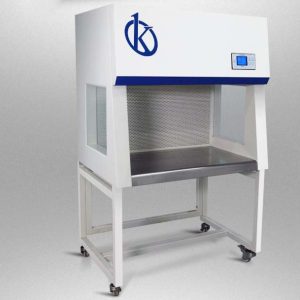
Laminar flow cabinet (Single Person) YR05266-1
-
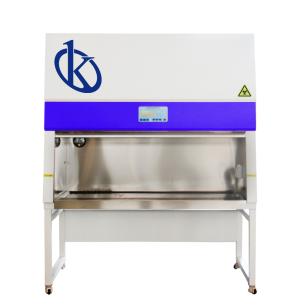
Biological Safety Cabinet 100% Exhaust Class II A2 Biosafety Cabinet YR05704 // YR05707
Select options This product has multiple variants. The options may be chosen on the product page -

Laminar Flow Cabinet YR05743
-
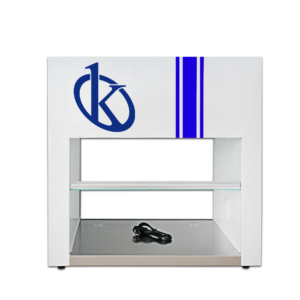
Vertical Laminar Flow Cabinet YR05735
-
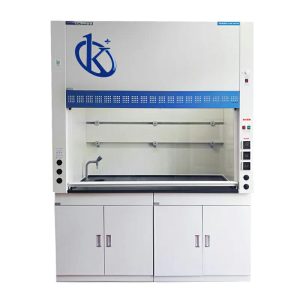
Laboratory Fume Hood,acid and alkali resistance Fume Cupboard Hospital Laboratory equipment YR05817 // YR05819
Select options This product has multiple variants. The options may be chosen on the product page -

Laminar Flow Cabinet YR05737
Guides to becoming an expert in Biosafety Cabinets and Hoods
Importance of the Laminar Flow Hood in the handling of medical specimens
The laminar flow bell consists of a camera with two accesses or burlesque. The first acts as a barrier to prevent any contaminants from...
Benefits and needs of a Laminar Flow Hood in a medical Laboratory
Instead of relying on cleaning protocols to keep products safe, a laminar flow hood slows the progress of unwanted bacteria...
How to make the most of the Laminar Flow Hood in a medical Laboratory
In recent years, the development of new technologies has enabled the advancement of medicine. The laminar flow hood is a technology...
How to safely use a Laminar Flow Hood in a Medical Laboratory
It is essential to maintain good laminar flow around the hood to ensure optimum performance. All new or used items should be cleaned before placing them in the hood. Personnel should wear special clothing...
Video of our Biosafety Cabinets and Hoods in operation
In this section you can find, our Biosafety Cabinets and Hoods in operation, packaged, receiving service, etc..
Biosafety Cabinets and Hoods in operation
A medical laboratory is an extremely critical environment and its physical environment must be carefully controlled to ensure that all analysis results are valid and reliable. In this scenario, a laminar flow hood (CFL) offers a unique solution for medical laboratories due to its features and benefits. This hood is defined as a device used to reduce the spread of airborne particles that occur in laboratory work, specifically those related to human health.

Frequently Asked Questions about Biosafety Cabinets and Hoods
How to know the prices of Biosafety Cabinets and Hoods?
To know the price of Biosafety Cabinets and Hoodss we invite you to send us an email with your request through the contact form.
What are the delivery times for Biosafety Cabinets and Hoods?
- If the equipment of your interest is in stock or if it must be manufactured.
- The type of freight you have chosen, this may be; air or sea.
How to make a purchase of Biosafety Cabinets and Hoods?
- By email: [email protected]
- By telephone: +33 (0) 1 78 95 87 02
- E-commerce: Via Kalstein's official website in your country.
How does the warranty work?
Can I request a quote online?
Of course, you can request a quote for the Kalstein team of your interest, directly from our official website. Once you have identified your preferred model, click HERE
